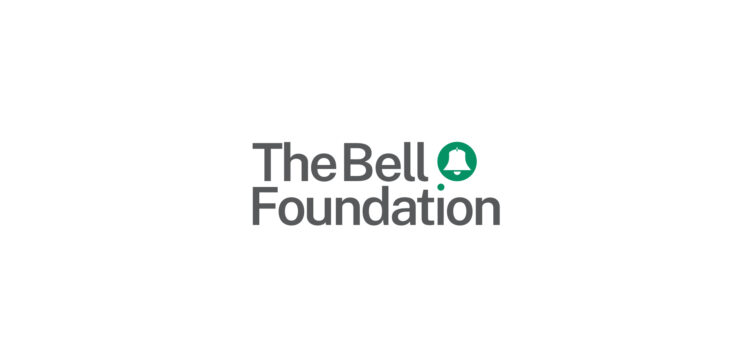Using Comprehensible English – for Secondary School (Online Regional Training)
- Date
- TBC
- Price
- £45
- Type
- Online course, Regional training
- Location
- Online
Explore our seven calls to action for the new Government to integrate children who use EAL.

Language drills are a way of memorising a chunk of language by repeating it. They can be a very effective approach for learning new vocabulary or language structures. They are a way of ensuring new vocabulary is introduced in a curriculum context. Through drilling, learners internalise the target language and are more likely to be able to produce it independently in the future, both in speech and writing.
There are various types of drills, for example:
Language drills can be used in any subject and with any age group. They are particularly useful for EAL learners at the earlier stages of English language proficiency, i.e. New to English to Developing Competence.
1. Chain drill:
Picture flashcards, for example from Learning about Magnetism can be used for a simple question and answer chain drill. Show the first card to Learner A and ask, for example, ‘What is it?’ When Learner A replies ‘It’s cooking foil’, give them the card. Learner A then asks Learner B the same question and passes on the card to them when they answer correctly. More cards can be introduced so that several are circulating at the same time. The same cards can be used to drill a more complex question and answer (either in terms of language or science), e.g. ‘Do you think ____ is magnetic?’ ‘No, I don’t think it’s magnetic because it’s made of ...’ or ‘Yes, I think it’s magnetic because it’s made of…’
2. Ball drill:
A ball drill is a variation of a chain drill where the learners stand in a circle. For example, the teacher points to a picture of a polygon and says, ‘How many sides has a square got?’ then throws the ball at Learner A who has to reply ‘A square has four sides.’ The teacher changes the picture and Learner A throws the ball to Learner B asking ‘How many sides has a hexagon got?’ and so on.
3. I went to market:
Give each learner a flashcard and start the drill by modelling the target language. For example, using the picture flashcards from A Balanced Diet start it with ‘I went to the market and I bought an aubergine’. Learner A, who has been given a picture of some rice then has to say ‘I went to the market and I bought an aubergine and some rice’ and so on, so the list they have to remember gets longer and longer. This can be done with different structures and in different subjects, for example to drill the language needed to describe a science practical: Learner A: ‘First we collected our equipment’. Learner B: ‘First we collected our equipment then we put on our safety goggles’. Learner C: ‘First we collected our equipment then we put on our safety goggles then we lit the Bunsen burner’.
4. Hunt the object:
This drill is like a game of ‘hotter and colder’. It can be played with any language structure in any curriculum context. First the teacher introduces the target structure, for example, ‘William Shakespeare is a world-famous playwright and poet.’ One person is the searcher and is sent out of the room while the teacher and class hide an object, for example a picture of Shakespeare, somewhere. When the searcher comes back in they have to look for the object. The rest of the class chant the target sentence, getting louder as the searcher gets closer to the object and quieter as they move away. The teacher can orchestrate the volume with their hands. When the searcher finds the picture, the drill can be repeated using a different object and phrase. For example, the second object could be a copy of Macbeth and the target structure could be ‘Macbeth is one of Shakespeare’s most popular plays.’
Top tip: Choose a phrase or structure that sounds natural in English and preferably will be useful in a range of curriculum subjects. For example, comparing and contrasting: ‘Hydrogen and oxygen are both gases.’ ‘Water is a liquid, but ice is a solid.’
Language drills are useful because they give EAL learners an opportunity to hear and practise key language structures. Crucially they involve repetition of target language, which research shows is important to learning new vocabulary (e.g. Alali and Schmitt 2012). They are a strategy for teaching phrases or sentences, not just key words, as recommended by Cameron (e.g. Cameron 2003, Cameron and Besser 2004).
As well as being useful for learners who are New to English to help them to learn basic structures, language drills can be used at any proficiency level to support learners in internalising useful academic language and building the vocabulary they need for exam success (Stanovich 1993, Nagy and Townsend 2012).
Alali, F. and Schmitt, N. (2012). Teaching formulaic sequences: The same or different from teaching single words? TESOL Journal 3, 2: 153-180.
Cameron, L., 2003, Writing in English as an Additional Language at Key Stage 4 and post-16, London: Ofsted
Cameron, L. and Besser, S., 2004, Writing in English as an Additional Language at Key Stage 2, Nottingham, UK: DfES Publications.
Nagy, W.E. and Townsend, D. 2012, Words as tools: Learning academic vocabulary as language acquisition, Reading Research Quarterly, 47 (1): 91-108.
Stanovich, K.E. (1993), Does reading make you smarter? Literacy and the development of verbal intelligence, Advances in child development and behaviour, 24, 133–180.